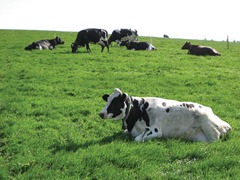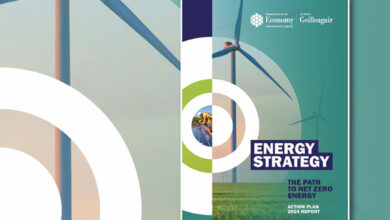Bovine TB: a problem that won’t go away
 Richard Halleron explains the origins of the problem and the differing approaches in Northern Ireland and England.
Richard Halleron explains the origins of the problem and the differing approaches in Northern Ireland and England.
The link between TB in cattle and the spread of the disease to humans has been known about for generations. This is why, for example, all milk sold for human consumption is pasteurised. The eradication of the disease has been a priority for every European country, going back to 1950.
Up to now, the strategy employed has included the annual testing of all cattle herds and the removal of all disease reactors identified in this way. Space does not permit a detailed treatise on the accuracy of the testing procedures currently in use. Let’s just say that a number of farming organisations believe that more could be done to develop testing procedures that are more accurate and cheaper to implement.
What’s not under dispute, however, is the high level of success achieved in reducing TB levels within the cattle population over recent years. Half a century ago, the level of infection was approximately 3.0 per cent of all animals tested. Today, the comparable figure is in the region of 0.003 per cent. But that’s where the good news ends.
Try as they might, government veterinarians – working throughout the island of Ireland – have not been able to eradicate TB completely. In fact, infection levels have actually started to creep back up since 1996.
One reason for this is the fact that wildlife – and specifically badgers – represent a significant reservoir of TB. This has been proven repeatedly, courtesy of post-mortem examinations carried out on ‘road kill’ specimens. Government is also concerned about the financial burden that bovine TB eradication is putting on the public purse.
The latest UK figures confirm that TB has cost the taxpayer £500 million. It is estimated that this will rise to £1 billion over the next ten years if the disease is left unchecked.
Earlier this year, Northern Ireland’s Farm Minister Michelle O’Neill opened up a new front in the battle to eradicate TB locally. Her ‘test, vaccinate or remove’, or TVR, policy will see Agri-Food and Biosciences Institute (AFBI) scientists testing badgers in TB hot spot areas; vaccinating those found to be free of the disease and removing infected animals. She claims this approach represents a win-win scenario for both cattle and badgers as it will serve to significantly reduce the levels of TB within both populations.
But the implementation of the scheme has not been without its problems. Step one in the process is the required survey of all the badger setts in the target areas. To date, approximately 30 per cent of landowners in South Down have not given permission for AFBI representative to come on to their land. Without full farmer co-operation, the Minister’s TVR strategy will not succeed.
Meanwhile, across in Great Britain, the Department of Environment, Food and Rural Affairs (DEFRA) has taken a different approach to eradicating TB from hotspot areas. Over the past number of weeks, test badger culls have been carried out across the South West of England. This has entailed the shooting of the animals by marksmen.
As one might well imagine, the plans now in train to reduce the reservoir of TB in badger populations throughout the UK have gone down like a ‘lead weight’ with the various animal conservation groups. Protesters have been thin on the ground here in Northern Ireland. However, the very opposite is case in England with conservation groups active in Dorset and Somerset on a nightly basis.
It will take at least 12 months for the impact of the various ‘badger removal’ policies to be gauged. In the meantime, badgers would be well advised to keep a low profile.





